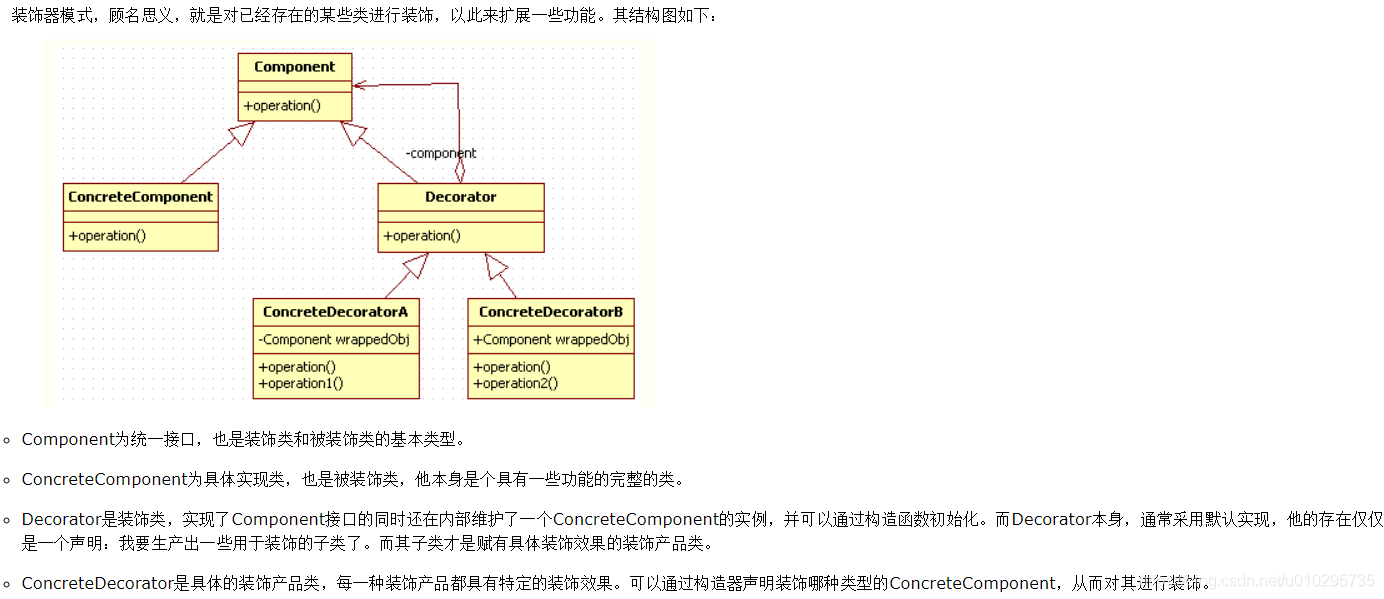装饰器模式
装饰器的价值在于装饰,他并不影响被装饰类本身的核心功能。在一个继承的体系中,子类通常是互斥的。比如一辆车,品牌只能要么是奥迪、要么是宝马,不可能同时属于奥迪和宝马,而品牌也是一辆车本身的重要属性特征。但当你想要给汽车喷漆,换坐垫,或者更换音响时,这些功能是互相可能兼容的,并且他们的存在不会影响车的核心属性:那就是他是一辆什么车。这时你就可以定义一个装饰器:喷了漆的车。不管他装饰的车是宝马还是奥迪,他的喷漆效果都可以实现。
ComponentComponentDecorator
componentaction()->component.action() + 装饰

1
2
3
4
5
6
7
8
9
10
11
12
13
14
15
16
17
18
19
20
21
22
23
24
25
26
27
28
29
30
31
32
33
34
35
36
37
38
39
40
41
42
|
public interface Component {
public void biu();
}
public class ConcretComponent implements Component {
public void biu() {
System.out.println("biubiubiu");
}
}
public class Decorator implements Component {
public Component component;
public Decorator(Component component) {
this.component = component;
}
public void biu() {
this.component.biu();
}
}
public class ConcreteDecorator extends Decorator {
public ConcreteDecorator(Component component) {
super(component);
}
public void biu() {
System.out.println("ready?go!");
this.component.biu();
}
}
|
1
2
3
4
5
6
7
|
Component component = new ConcreteDecorator(new ConcretComponent());
component.biu();
ready?go!
biubiubiu
|
同一级下的兄弟类通常有很多。当你有五个甚至十个ConcreteComponent时,再想要为每个类都加上“ready?go!”的效果,就要写出五个子类了。毫无疑问这是不合理的。装饰器模式在不影响各个ConcreteComponent核心价值的同时,添加了他特有的装饰效果,具备非常好的通用性,这也是他存在的最大价值
参考文献
装饰器模式(Decorator)——深入理解与实战应用
